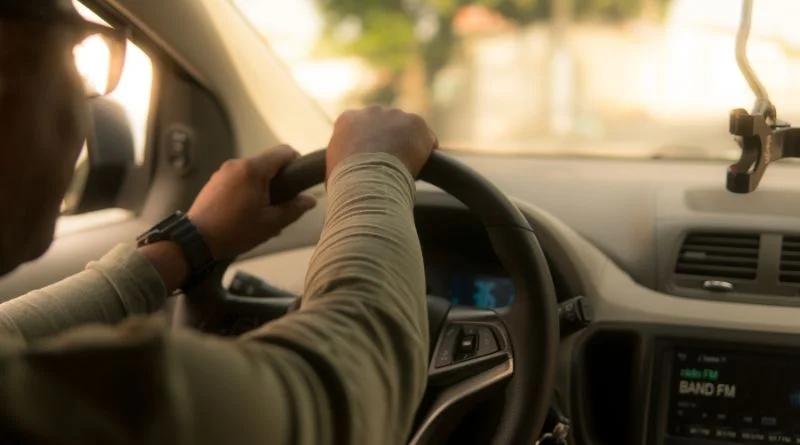How Dangerous Is Driving While High on Marijuana?
From 2007 to 2014, marijuana road-related arrests rose from 8.7% to 12.6%. With the herb becoming more accepted and legal in numerous states, it seems laws are set to change. What are the charges for driving while high?
Due to limited substance-testing technology, setting laws in place around driving under the influence of drugs (DUID) is proving difficult. Where alcohol has a standard level of impairment that can be measured in the bloodstream (0.08%), marijuana doesn’t.
In this article, we’ll take a look at how high is too high when driving, and exactly what the repercussions are.
Driving After Toking
Laws around marijuana use and driving vary substantially. Each state has its own set of rules with a range of implications.
A subject that has caused much debate in the US is how to test if someone is high while driving. In the US, authorities and scientists alike have asked two questions:
- Does marijuana (specifically THC) impair driving ability?
- Is the process designed for testing THC in the bloodstream accurate?
Concerning question number one, scientific evidence has no solid answer. The general consensus is that the likelihood of someone high on weed causing an accident is no more than the average driver.
Slight impairments such as slower reaction times and divided attention are effects associated with smoking a joint and driving. However, no studies have been able to accurately pinpoint these reactions to a higher vehicle accident rate.
State Control
When measuring the level of alcohol in the bloodstream, the tests are accurate and present similar results.
This outcome isn’t the same for measuring the presence of THC in the bloodstream. So how do authorities determine driving while high charges? Each state has devised its own laws in an attempt to control it.
Let’s take a close look at some of these laws and learn exactly what happens if you drive high in your state.
All 50 state laws fall under three criteria:
- A zero tolerance policy that incriminates any amount of cannabis or its derivatives in your system.
- Per se laws state that a certain amount of THC found in the system is a criminal offense.
- Degree of impairment laws focus on how impaired the driver is and the danger it presents.
Ten states have initiated the zero-tolerance policy by punishing any driver found under the influence of weed. It also includes the possession of cannabis and metabolites in the bloodstream.
When you buy cannabis seeds or buds (visit this site for high THC seeds), it’s recommended to do so in smaller quantities. If authorities catch you with large amounts in these states, they’re entitled to prosecute you.
The ten states are as follows:
- Arizona
- Delaware
- Georgia
- Indiana
- Michigan (no laws against metabolites)
- Oklahoma
- Pennsylvania
- Rhode Island
- South Dakota
- Utah
If you’re looking for states where you are allowed to drive high, these ones follow per se marijuana laws:
- Colorado
- Illinois
- Iowa
- Montana
- Ohio
- Washington
- Wisconsin
Colorado was the first of eight states to legalize marijuana for recreational use. After the law change, however, it’s seen a rise in cannabis-related driving accidents.
How Do I Get Tested for Marijuana Intoxication?
What happens if you drive high and get caught? The most common method officers use to check for cannabis in the body is an oral fluid test.
They do this test by swiping the inside of your mouth with a cotton swab and then testing it for traces of marijuana.
Law enforcement officers can do these assessments through roadside testing, giving immediate intoxication results.
Another method that has been used to check for cannabis intoxication levels is blood tests. Law enforcement has, however, found this to be an unreliable and delayed form of testing.
Driving While High
As with people driving under the influence of alcohol, there are a few telltale signs to recognize stoned drivers.
Here are some simple road safety rules to follow if you live in a state where it’s legal:
- Limit cannabis use: Keep your toking to a minimum when you will be operating a vehicle. You lessen the risk of slowing down your reaction instincts and avoid the likelihood of an accident.
- Know your herb: As we all know, cannabis offers different levels of “highness.” If you are trying an unfamiliar strain, you can’t be certain of the effects. If you’re experimenting, enjoy the high at home, or somewhere safe and private.
- Follow the rules: Learn how to drive while high. A sure giveaway is reckless driving. From truck drivers to cyclists, everyone has a set of rules that need to be followed. Abide by the regulations, drive sensibly, and you’ll be home free.
- Time your smoke sessions: If you plan on smoking weed, aim to do it at least 3–4 hours before you hit the road. This way, most of the effects will wear off and you’ll have no trouble concentrating.
To Sum Up
Although the laws are still developing in certain states, keeping yourself and others safe is always a good idea. Learn your state’s driving while high charges. This information will help to keep you out of sticky situations and unnecessary trouble.
Marijuana is the herb of peace and love. Let’s keep it that way by respecting the law and taking responsibility.




